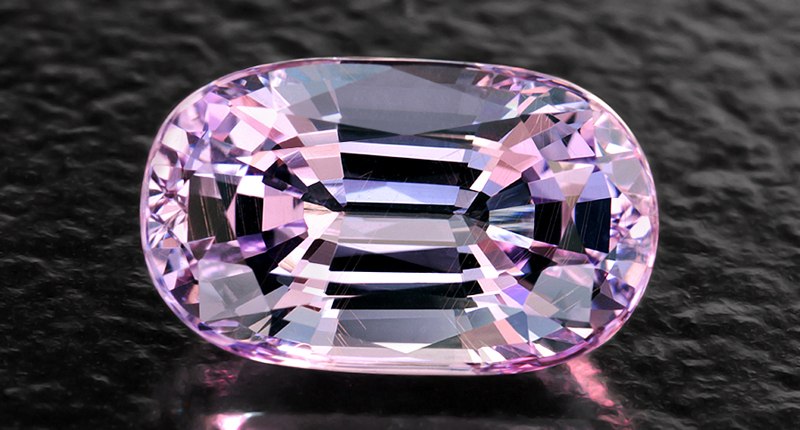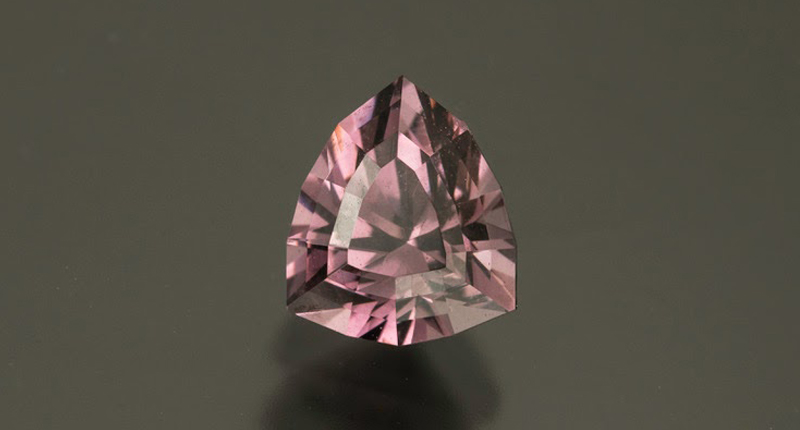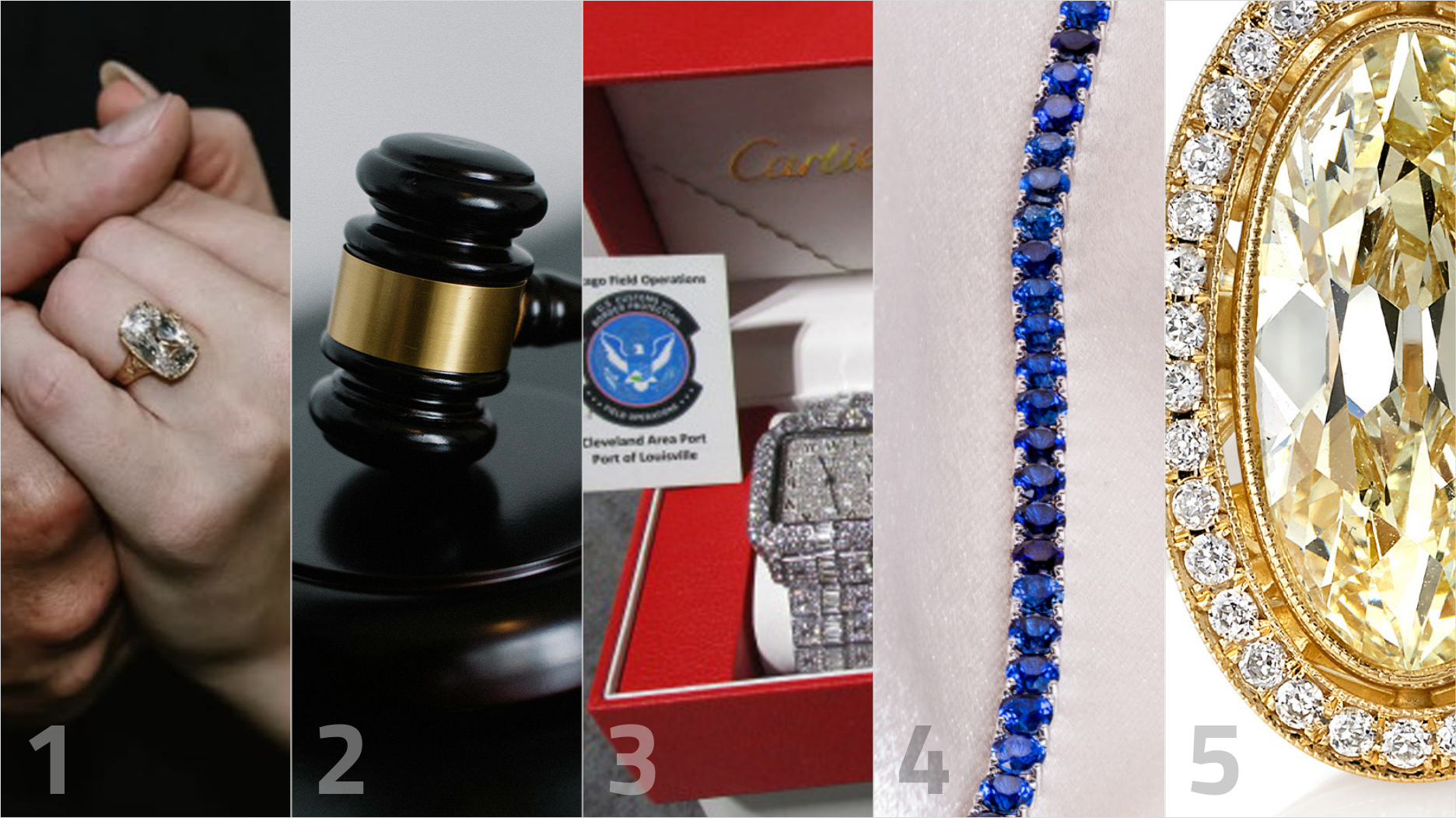5 Things to Know About … Taaffeite
Long mistaken for spinel, taaffeite holds the distinction of being the only gem identified from a faceted stone.

But, as it turns out, there’s another gemstone that rivals spinel when it comes to identification confusion.
Enter taaffeite, a very rare gemstone that looks similar to spinel but isn’t as well known.
Taaffeite can come in various pink and purples shades like lilac, violet and mauve, as well as red, brown, bluish hues, gray, green and colorless.
I happened upon the gem while scrolling through Instagram, as one does, and immediately added it to my list of stones to cover.
I’m so glad I did; there are many interesting things about this gem beyond just its rarity, though that is of course one of its more notable aspects.
Here are five things to know about taaffeite.
1. It was long mistaken for spinel.
One of my favorite parts of researching this stone was hearing the story of how it was “discovered.”
In 1945, gemologist Count Edward Charles Richard Taaffe of Dublin, Ireland, was sifting through a parcel of cut and polished stones.
While examining them, he realized a small mauve-colored stone weighing 1.419 carats that looked like spinel might be something different.
Importantly, the gem was doubly refractive. Spinel, like diamond and garnet, is singly refractive.
Curious and wanting to investigate further, Taaffe sent the gem to the Laboratory of the London Chamber of Commerce for testing.

Researchers eventually confirmed it was a new species and named the stone after the gemologist.
Part of the new gemstone was used for analysis, and the remainder was returned to Taaffe as a 0.55-carat stone, according to the International Gem Society (IGS), standing as the first official chunk of taaffeite.
Taaffeite is the first, and still only, gemstone initially identified from a faceted gemstone.
Carl Larson of gem dealer Pala International called this “extraordinary” since cut gems are harder to identify than rough as an observer loses “clues” like the crystal system.
2. Here’s how it’s similar to, and different from, spinel.
At first glance, many taaffeites looks just like spinel. It’s once you get into the specifics that you’re able to spot the differences.
The two gemstones have a similar hardness (8 for spinel, 8 to 8.5 taaffeite), refractive index (1.1712-1.762 for spinel and 1.719-1.730 for taaffeite), and specific gravity (3.54-3.63 for spinel and 3.60-3.62 for taaffeite).
But, as mentioned above, taaffeite’s birefringence sets it apart.
Taaffeite also has a different chemical composition and crystal structure than spinel. Spinel forms in cubic crystals whereas taaffeite forms in the hexagonal crystal system.
3. It originates from only a few sources around the world.
The source of taaffeite was unknown for a long time. Eventually, small fragments were found in Sri Lanka and southern Tanzania, according to reference site GemDat.org.
Material also has come from Myanmar, and some lower-grade taaffeite has been found in China and Russia, according to the IGS.
It’s not surprising the gemstone has been mistaken for spinel, not only because of its similar appearance but also because, according to Gems & Gemology, it’s found mixed in with parcels of spinel.

4. And it is rare.
For many years after Taaffe’s discovery, there were only known to be a few samples, and taaffeite remains one of the rarest minerals in the world, IGS said.
An article in the summer 1982 issue of Gems & Gemology said only about 10 specimens had been identified at that time, and estimates for how much taaffeite is currently in circulation today remain fairly small.
Due to its incredible rarity, it’s used exclusively for cut gemstones, multiple sources said.
Larson said he’s only worked with about 20 taaffeite stones in his seven years with Pala International, adding he’s only sold four stones he’d call fine quality.
According to Bonhams, the few taaffeites seen on the market are usually light in color and small.
5. There are options at many price points, but the high-end goods get gobbled up.
Because much of the material is lighter in saturation it can also be accessibly priced, between about $1,500-$2,500 per carat, according to Howard Fensterman Minerals.
But as is the case with most gemstones, top-quality pieces are rare and, thus, expensive.

Larson said the light-pink material and dark-purple material tends to be priced at around $800 to $2,500 per carat.
Finer colors with more saturation can go up to about $5,500 to $7,500 per carat, while those with intense color that are clean inside can sell for as much as $15,000 per carat.
These fine stones sell very quickly, Larson added, noting most buyers he’s encountered are well researched on the subject and know as much, if not more, than he does about the gem.
There have even been a few examples of taaffeite at auction—in 2018, a lavender kite-shaped taaffeite weighing 5.34 carats went up on the block at Bonhams, where it sold for $20,000 including buyer’s premium.
David Weinberg of gemstone wholesaler Multicolour said they are seeing a few very specific markets for taaffeite: collectors, engagement rings and collector-investors.
While he noted demand has dipped in light of the coronavirus pandemic, it is still “generally better” than most stones, a performance he attributes to the increasing popularity of rare gemstones.
Larson also said the fine stones sell very quickly, adding any material that’s eye-clean with strong color and a good cut will sell relatively quickly, no matter the size.
The Latest

As the shopping mall model evolves and online retail grows, Smith shares his predictions for the future of physical stores.

The trade show is slated for Jan. 31-Feb. 2 at The Lighthouse in New York City's Chelsea neighborhood.

January’s birthstone comes in a rainbow of colors, from the traditional red to orange, purple, and green.

How Jewelers of America’s 20 Under 40 are leading to ensure a brighter future for the jewelry industry.

The annual report highlights how it supported communities in areas where natural diamonds are mined, crafted, and sold.


Footage of a fight breaking out in the NYC Diamond District was viewed millions of times on Instagram and Facebook.

The supplier has a curated list of must-have tools for jewelers doing in-house custom work this year.

Roseco’s 704-page catalog showcases new lab-grown diamonds, findings, tools & more—available in print or interactive digital editions.

The Signet Jewelers-owned store, which turned 100 last year, calls its new concept stores “The Edit.”

Linda Coutu is rejoining the precious metals provider as its director of sales.

The governing board welcomed two new members, Claire Scragg and Susan Eisen.

Sparkle with festive diamond jewelry as we celebrate the beginning of 2026.

The master jeweler, Olympian, former senator, and Korean War veteran founded the brand Nighthorse Jewelry.

In its annual report, Pinterest noted an increase in searches for brooches, heirloom jewelry, and ‘80s luxury.

Executive Chairman Richard Baker will take over the role as rumors swirl that a bankruptcy filing is imminent for the troubled retailer.

Mohr had just retired in June after more than two decades as Couture’s retailer liaison.

Shekhar Shah of Real Gems Inc. will serve as president of the Indian Diamond & Colorstone Association in 2026.

This year’s good luck charm features the mythical horse Pegasus, and is our first Piece of the Week of the new year.

As part of the leadership transition, Sherry Smith will take on the role of vice president of coaching strategy and development.

It marks the third time the country has headed the Kimberley Process. Ghana will serve as vice chair.

The new Bulova x Stetson designs highlight two animals often associated with the American West—the bison and the Texas Longhorn.

Its residency at Yamron Jewelers will run through May 2026.

From influential executives to innovative designers, we pay tribute to the people we said goodbye to this year.

The retailer is expanding into areas with large Indian and South Asian populations.

The Italian brand has opened its first flagship amid the peaks of the Dolomites in Madonna di Campiglio, Italy.

The new curation at the Natural History Museum of Los Angeles County showcases rare gem and mineral specimens in their uncut, natural state.

The couple pleaded guilty to concealing at least $127 million in cash transactions at its precious metals businesses.






























